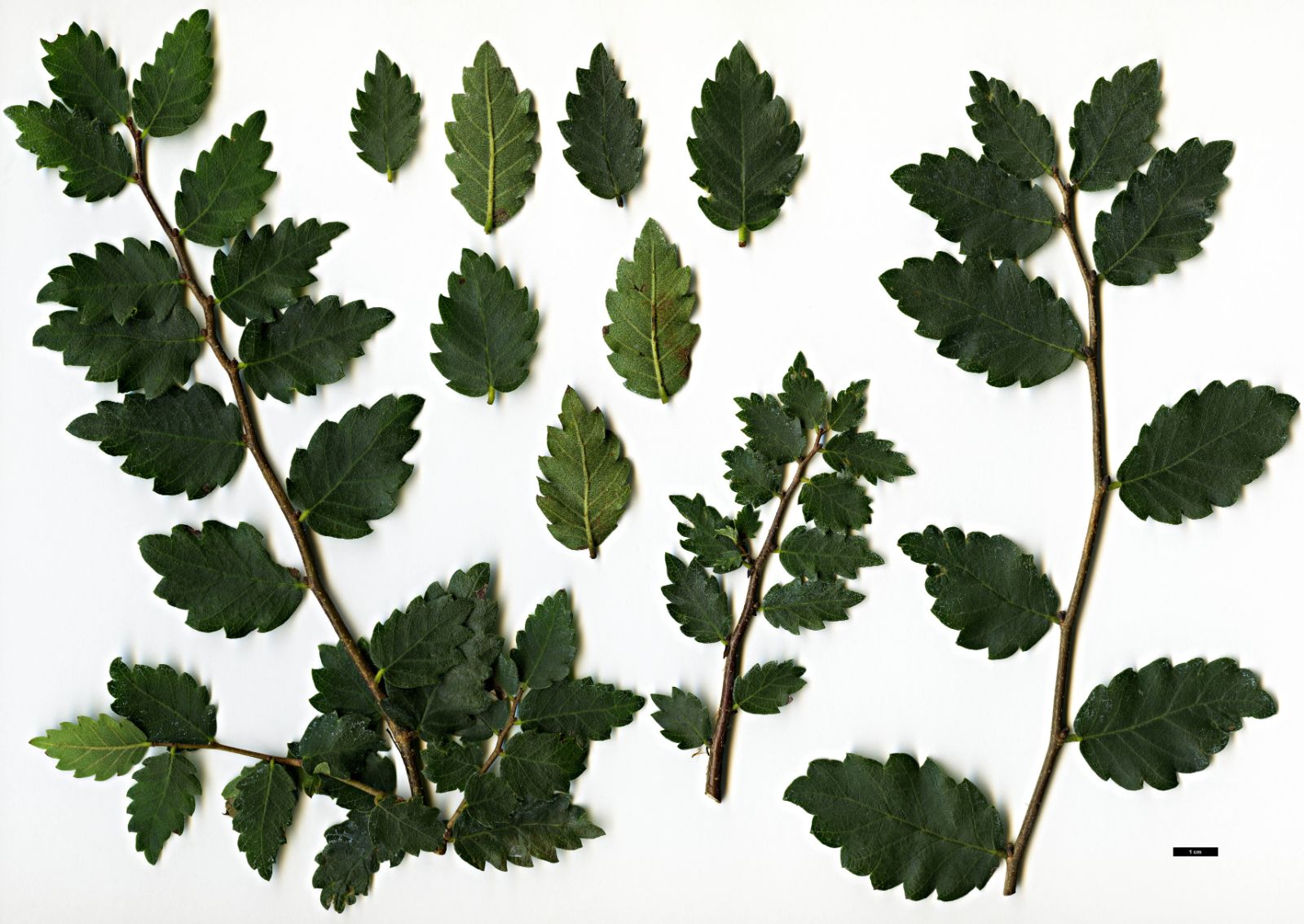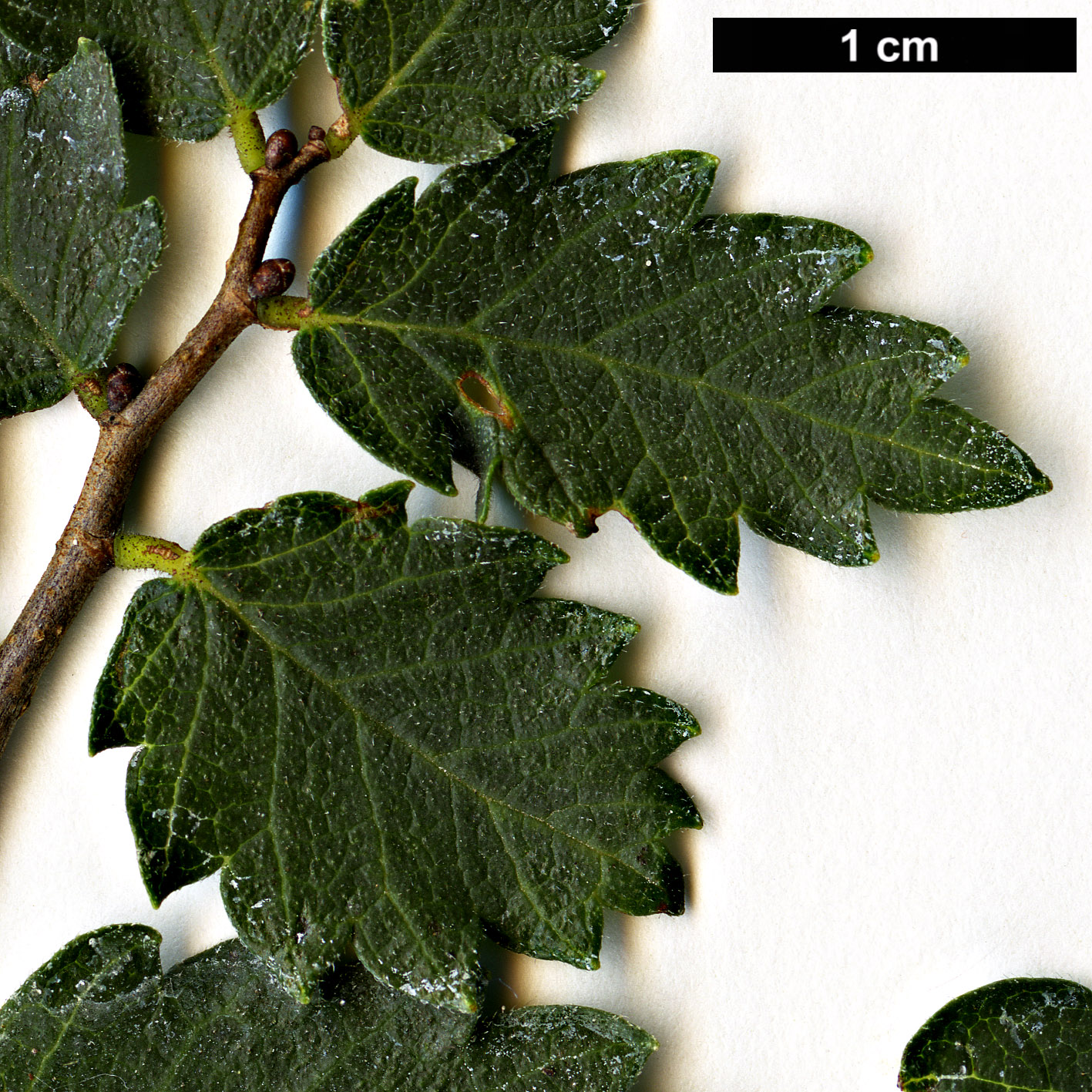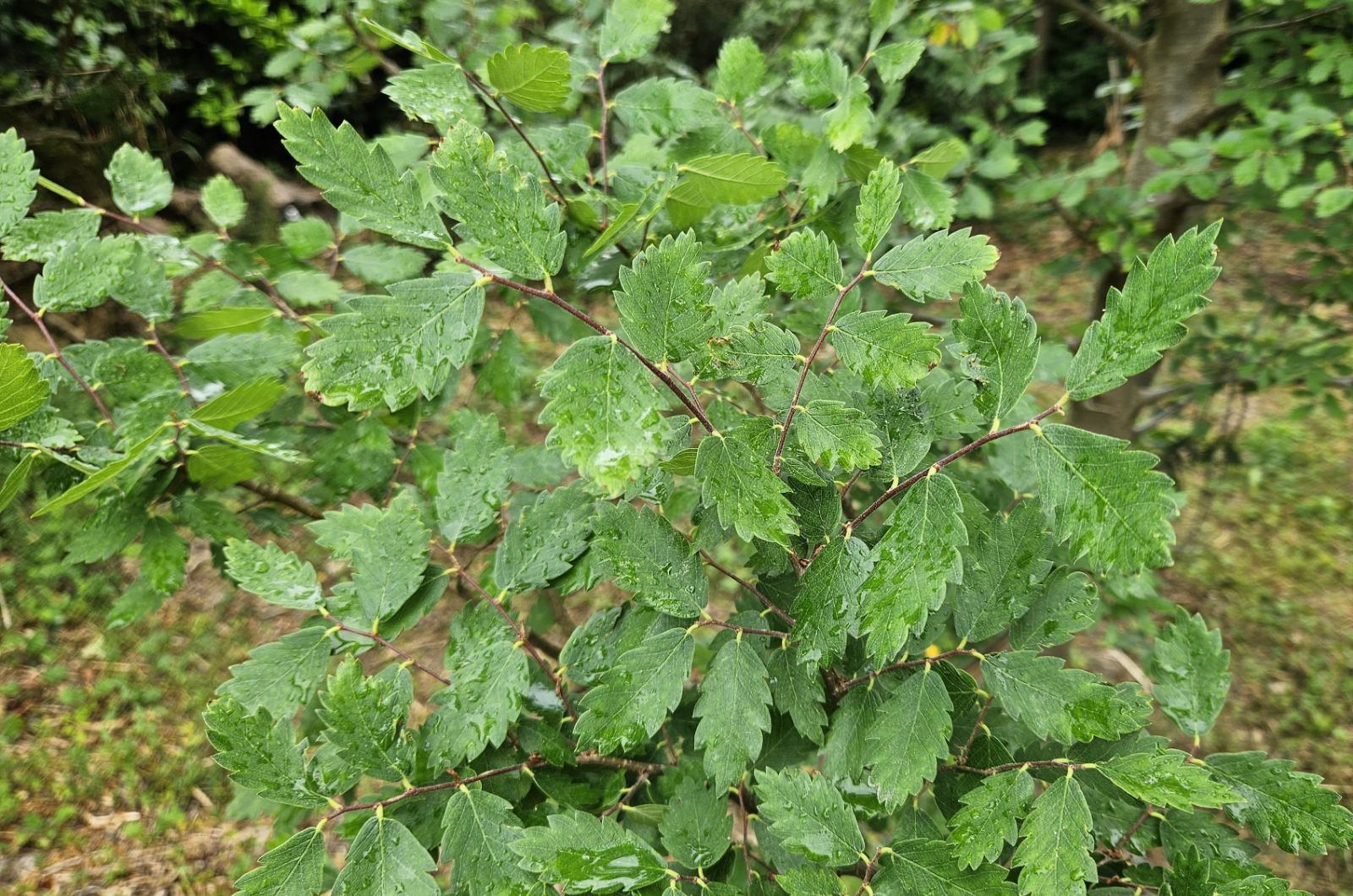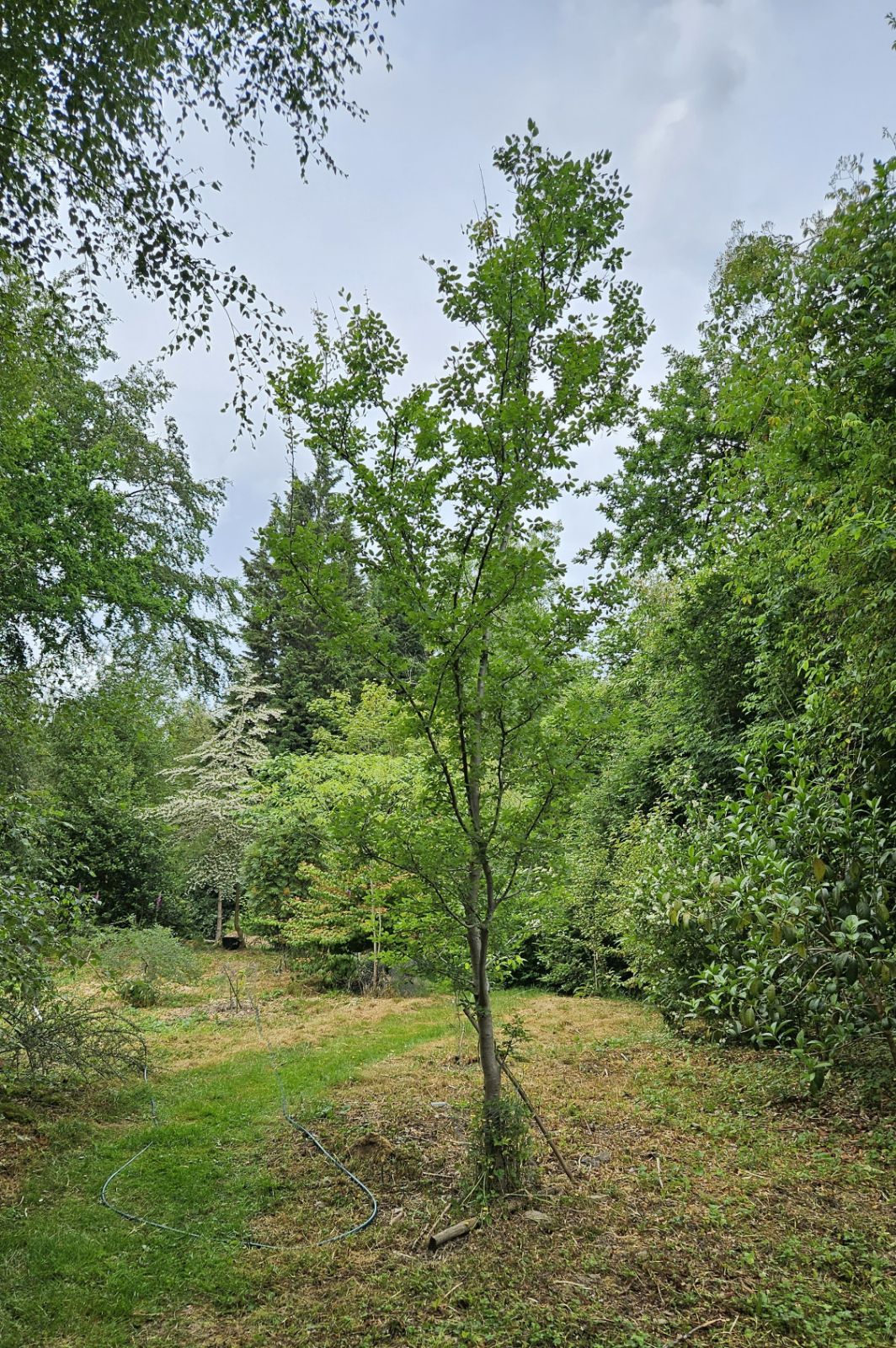Zelkova sicula
Sponsor
Kindly sponsored by
Francine: 'after many informative Tours and Study Days with the IDS I feel it only fitting to help and promote such a wonderful organisation'
Credits
Owen Johnson (2023)
Recommended citation
Johnson, O. (2023), 'Zelkova sicula' from the website Trees and Shrubs Online (treesandshrubsonline.
Genus
Common Names
- Sicilian Zelkova
A tree (potential stature unknown; dwarfed in the two wild populations), suckering freely. Bark grey, smooth in young and dwarfed trees, probably ultimately exfoliating in thin plates. Twigs pubescent. Leaf rounded at the base, acute but not acuminate at the tip, rough above with short hairs and with waxy papillae, pubescent beneath; Petiole short (c. 4 mm), pubescent. In the clone ‘Bosco Pisano’ the leaf is ovate and broadest near the base, c. 5 × 3 cm, with (3–)4–6 pairs of major veins each terminating in a large tooth and with occasional intermediate teeth or forking veins. In the clone ‘Ciranna’ the leaf is broadly lanceolate, c. 6 × 3 cm, with (3–)5–8 pairs of major veins terminating in a large tooth. Drupe c. 3 mm wide, irregular in shape; the species is not fertile. (Kozlowski & Gratzfeld 2013).
Distribution Italy Sicily, in two tiny populations near the east coast
Habitat Gully bottoms with a year-round underground water supply, 318–526 m.
USDA Hardiness Zone 7
RHS Hardiness Rating H5
Conservation status Critically endangered (CR)
Zelkova sicula has recently attained a degree of botanical celebrity as the most recently discovered European tree species – rather than microspecies – and as one of the rarest. In 1991, Sicilian ecologist Guiseppe Garfi was undertaking a floristic survey in the Hyblaean Mountains in the east of the island (Garfi 2013) when he came upon a rocky gully at Bosco Pisano less than 200 m long, at an altitude of 450–550 m. Hidden in this gully were a couple of hundred stunted and cattle-browsed bushes whose foliage Garfi did not recognise. They were quickly identified as a species of Zelkova, closely resembling Z. abelicea whose natural distribution is confined to the island of Crete, over 700 km east. Genetic analysis showed that these plants were triploid, rather than diploid like the other Zelkova species – indicating an ancient hybrid origin. They had survived in an increasingly arid climate within the gully, where water ran underground year-round, thanks to the genus’ ability to sucker profusely. The pollen of these trees is abnormal, and no seedlings have been raised from them; the Bosco Pisano population therefore represents a single clone. Although they were heavily browsed by freely wandering cattle, local farmers were unaware of these plants (Kozlowski et al. 2018).
A concerted effort to safeguard the species was begun, and in 2009 a second slightly larger population was discovered in another broader valley at Ciranna, 17 km east and at a lower alititude in the Hyblaean Mountains. ‘Ciranna’ is another vegetatively propagating clone, and has a slightly different appearance to ‘Bosco Pisano’: its leaves are longer and more slender and on average have an extra two or three pairs of major veins, each of which, as in nearly all zelkovas, runs to a large tooth (Kozlowski & Gratzfeld 2013). The combined population extends to nearly 2000 suckering bushes. Wild fires and increasingly severe droughts are the major threats to the species’ survival; 23 of the Bosco Pisano suckers dried of drought stress in 2007 (IUCN 2017; Kozlowski et al. 2018). The two populations have now each been fenced against grazing.
Given the unsuitability of the microclimates in which the species has found itself marooned, Zelkova sicula immediately presented itself as a strong candidate for ex situ conservation. A sucker from the Bosco Pisano population was transplanted in 1993 to a garden at Buccheri, which at 820 m in the Hyblaean Mountains receives considerably more rainfall; by 2012 this had made a shapely tree 7 m tall and continues to grow quite vigorously (Kozlowski & Gratzfeld 2013). Zelkova sicula was also quickly shown to be eligible for translocation (assisted migration) – the artificial creation of new populations as an in situ conservation action. Four new populations have been established in the wetter northern mountains of Sicily and are growing much more vigorously than the parent plants, although snow, ironically, has damaged some of the saplings (Garfi 2018); a fifth new population has been planted near to the existing one at Bosco Pisano, for comparison.
It could well be that Zelkova sicula remains even better adapted to conditions further north in Europe. Since 2010, the micropropagation of cuttings for more widespread ex situ conservation and for commercial sale has been co-ordinated by the National Botanical Conservatory of Brest in France (Garfi 2013). Both ‘Bosco Pisano’ and ‘Ciranna’ are now well established in collections around Europe and both have been offered by specialist nurseries, with the species’ rarity more likely to entice buyers than is the grace which is common to the genus as a whole. This tree’s potential hardiness, as suggested above, is still a matter of guesswork, but saplings have established well as far north as the UK and promise to make much larger plants than those in the wild. One note of caution should be sounded: in 2023 several websites illustrated Z. sicula with foliage (photographed at Brest) which did not belong to a Zelkova at all and appeared to be Ulmus parvifolia, suggesting that there was already a degree of confusion within the supply chain for this very special plant.




